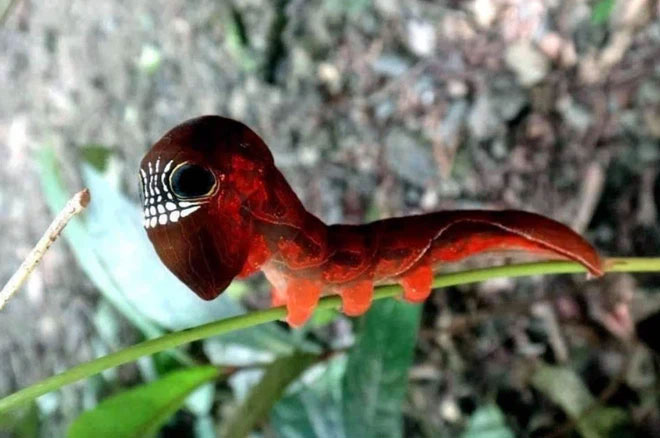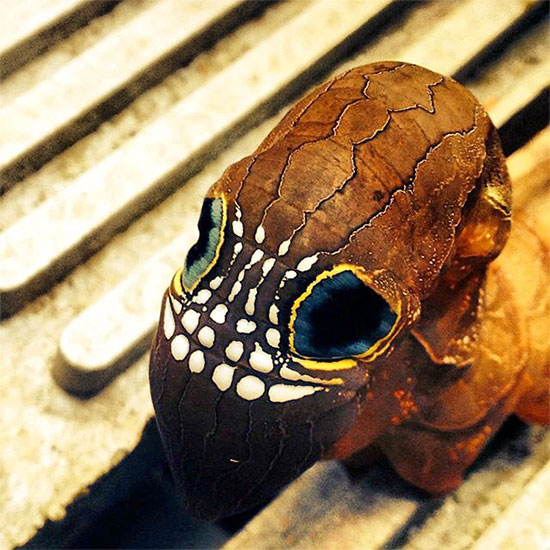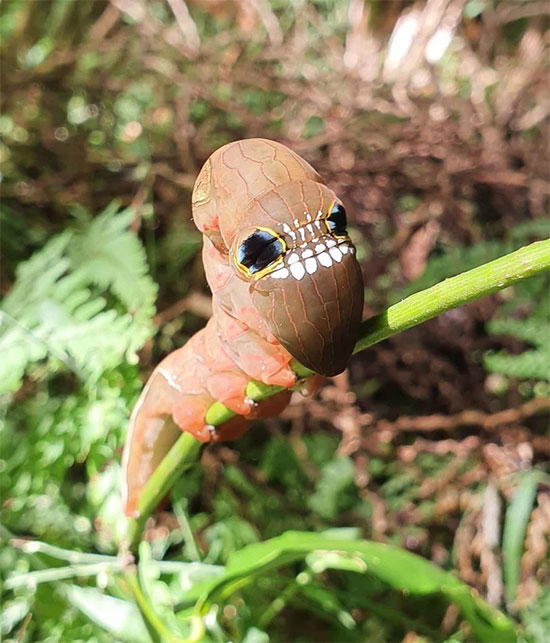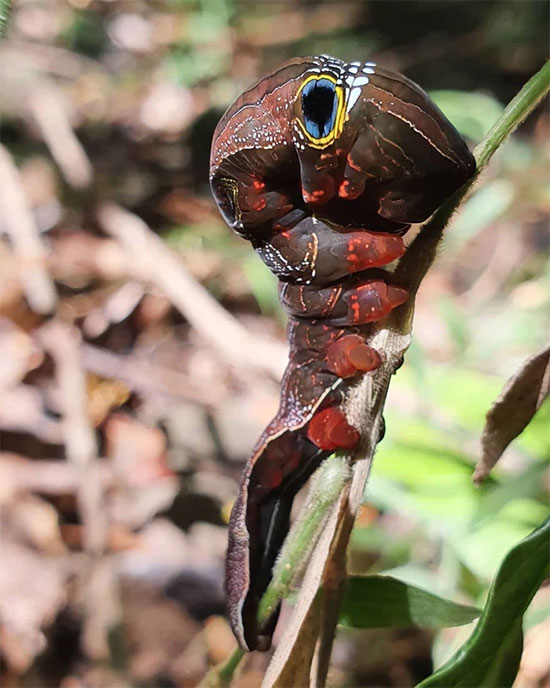The pink moth is a rare and mysterious insect found from subtropical New South Wales to Queensland and New Guinea. It feeds on rotting fruit and although it is nocturnal, it does not seem to be attracted to light.
This moth’s name is inspired by the bright pink band on its wings. Experts believe it acts as a defense mechanism because the sudden flashy colors appearing on their wings can startle or surprise predators.
 Pink Moth Caterpillar.
Pink Moth Caterpillar.
During that time, this moth will have enough time to escape. But that defense strategy is not really as unique as what pink moths do when they are still in larval form and have not yet molted.
When they first hatch, the caterpillars are light brown, which helps them blend in better with their surroundings and avoid detection by predators. But as they grow, their skin quickly develops two large black spots surrounded by yellow lines, looking like a pair of giant eyes. It even has two white lines that look like teeth.

When they first hatch, the caterpillars are light brown.
Although they look like a scary mask, the surprising thing is that they are located on the caterpillar’s back. So even though you see those “disguised eyes” seemingly staring at you, their head is actually nestled near the belly.

Pink moths are also sometimes called “big-headed moths”.
However, from some angles, we can clearly see the camouflage patterns and lines on their backs.
Pink moths are sometimes called “big-headed moths” because the position of their head tucked into their body and showing off their back looks like the head of a large, dangerous creature is their way of warning predators. enemy. Scientists say that this scare tactic helps defenseless caterpillars fool species that want to attack them.








